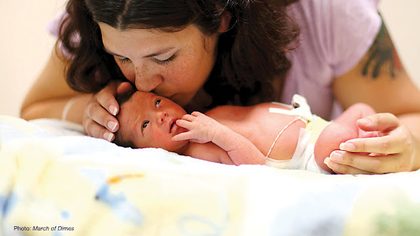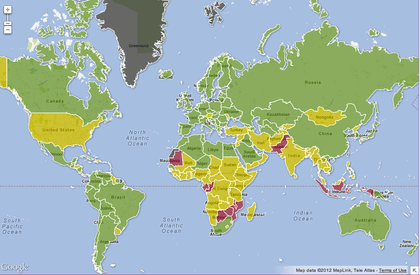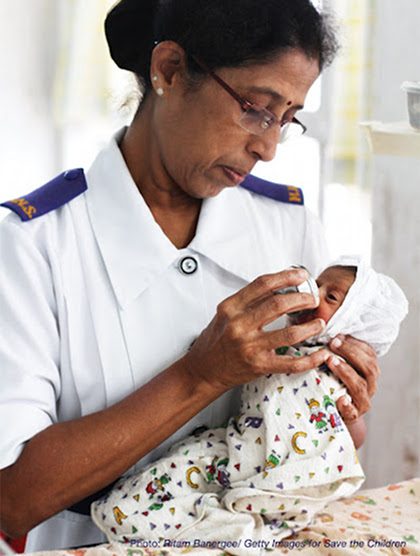SUMMARY
This is AI generated summarization, which may have errors. For context, always refer to the full article.

MANILA, Philippines – If you spent only 37 weeks or less in your mother’s womb, then you fall under this growing group of individuals who were “born too soon” or born prematurely.
And if you survived your first year with no persistent health complaints, then you are among the lucky ones indeed.
An estimated 1 million prematurely born babies die every year, a new report says. Countless others suffer from some type of lifelong physical, neurological, or educational disability–often at great cost to families and society, the report entitled, “Born Too Soon: The Global Action Report on Preterm Birth,” adds.
The study, released on May 2, says that each year, some 15 million babies in the world–or more than one in 10 births–are born too early.
It is a growing concern. The same study warns that the number of babies who are born too soon are on the rise. “The numbers of preterm births are increasing. In all but 3 countries, preterm birth rates increased in the last 20 years,” says Joy Lawn, co-editor of the report and Director, Global Evidence and Policy for Save the Children.
Rich, poor countries
A lot of those premature births–almost 350,000 of them–happen in the Philippines, which is one of 15 countries that account for two-thirds of the world’s pre-term births.
The list includes the following countries:
1. India
2. China
3. Nigeria
4. Pakistan
5. Indonesia
6. United States of America
7. Bangladesh
8. Philippines
9. Dem. Rep. of Congo
10. Brazil
11. Ethiopia
12. United Republic of Tanzania
13. Uganda
14. Sudan
15. Kenya

The problem is not confined to low-income countries.
The United States and Brazil both rank among the top 10 countries with the highest number of preterm births. In the United States, about 12 percent, or more than one in nine births, are preterm.
In high-income countries, the increases in the number of preterm births are linked to the number of older women having babies, increased use of fertility drugs and resulting multiple pregnancies.
In some developed countries, medically unnecessary inductions and Cesarean deliveries before full-term have also increased preterm births.
In many low-income countries, the main causes of preterm births include infections, malaria, HIV, and high adolescent pregnancy rates. In rich and poor countries, many preterm births remain unexplained.
Preventable deaths
Addressing pre-term birth is now an urgent priority for reaching Millennium Development Goal 4, which calls for the reduction of child deaths by two-thirds by 2015.
“Being born too soon is an unrecognized killer,” Lawn says.
She adds, “Preterm births account for almost half of all newborn deaths worldwide and are now the second leading cause of death in children under 5, after pneumonia.”
And solutions to the problem are not all expensive, the experts say.
An estimated three-quarters of those pre-term babies who die could survive without expensive care if a few proven and inexpensive treatments and preventions were available worldwide, according to more than 100 experts who contributed to the report.
The experts represent almost 40 United Nations agencies, universities, and organizations.

Inexpensive care
“People tend to associate preterm with high-cost intensive care services which would be challenging to poor countries, but a whole menu of effective, inexpensive services are available and work to save most of these lives,” says Carole Presern, PhD, a midwife who has delivered babies in remote areas of Asia and is the Director of The Partnership for Maternal, Newborn & Child Health.
Experts at the UN, medical institutions and field organizations say that inexpensive, proven forms of care for premature babies could save at least three quarters of these babies in the developing world. These include:
- Antenatal steroid injections for mothers in premature labor, which cost $1 an injection. This helps develop immature fetal lungs and prevent respiratory problems; yet, in low-income countries, they are only available and provided for 10 percent of those in need. This alone could save almost 400,000 lives of babies a year.
- “Kangaroo care” where the infant is held skin-to-skin on the mother’s chest to keep warm. The warmth is very important for premature infants. Kangaroo care makes frequent breastfeeding easy and provides constant maternal supervision for the infant. This could save 450,000 lives a year.
- Antiseptic cream to prevent birth cord infection.
- Antibiotics to prevent and fight infection, an important cause of neonatal death.
All health care providers, including physicians, nurses, and midwives, need training in basic preterm care, notes Dr. Presern who says she has seen too many situations where even the doctor doesn’t seem to know what to do with a tiny infant.
“The emphasis needs to be on prevention strategies that work everywhere, especially in low-resource, high-burden settings,” said Craig Rubens of the Global Alliance to Prevent Prematurity and Stillbirth (GAPPS) and one of the contributors to the report told Science Daily. – Rappler.com
Add a comment
How does this make you feel?
There are no comments yet. Add your comment to start the conversation.